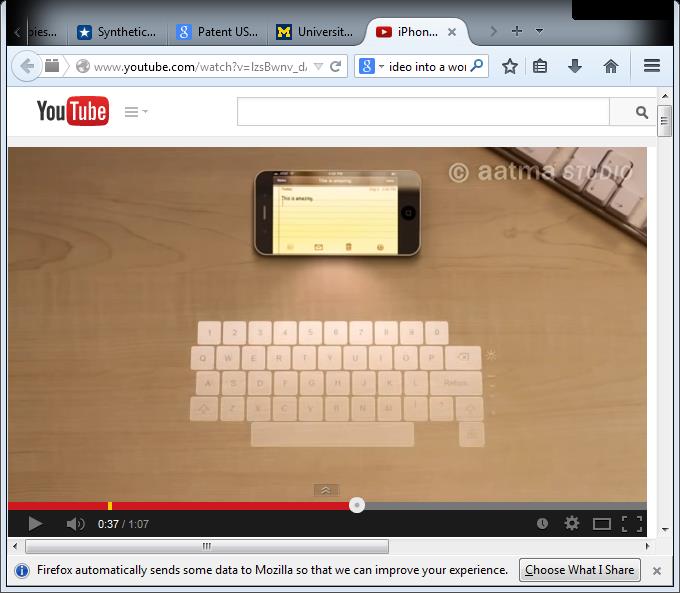As smartphones continue to advance in capabilities, rumors of a new device able to produce a hologram have become increasingly prolific. For example, the iPhone 5 was rumored to come with a holographic keyboard, and the youtube video below demonstrating that feature has close to 70 million views.

Although the holographic keyboard was not an actual feature of the iPhone 5, Ostendo Technologies, a startup based in Carlsbad, CA, is close to making holograph producing smartphones a reality.
For the past nine years, Ostendo has been researching and securing the funds necessary to manufacture the technology. Now, armed with over $100 million in backing from both government and private investors, Ostendo has produced a chip that is small enough to fit into a smartphone (less that 0.5 cubic centimeters) and can produce a 5,000 ppi (pixels per inch) holographic image . The image produced by a single chip is two dimensional, but multiple chips can be combined to produce a 3D video. The company hopes to start manufacturing the chips for use in smartphones in 2015, and each one will cost about $30.

Although Ostendo plans to sell these chips for use in smartphones, this is not the only thing the technology will be used for. In 2012, Ostendo signed a $58 million dollar contract with a division of the U.S. spy services, IARPA (the Intelligence Advanced Research Projects Activity), to build a Synthetic Holographic Observation (SHO) system. Under the conditions of the contract, Ostendo had to create SHO technology that would show off both standard overhead imagery and LIDAR (Light Operations and Data Ranging) data in 3D, allow analysts to move through the image, allow for “sustained and interactive exploration of massive and dynamic fused 3D data”, and be able to render “several terabytes” of data. Additionally, within the first 18 months of creating the technology, the company would have to be able to produce a hologram of at least 180 “hogels” (holographic pixels), and within 45 months it must be able to produce a hologram of at least 655,000 hogels. IARPA needs this technology so that groups of analysts will be able to look at the same 3D data without any special eyewear, and they need the SHO system to be “compatible with a fast-paced, collaborative operational environment”.
While the possibility of using your smartphone as a 3D video projector is certainly exciting, Ostendo’s Quantum Photonic Imager will be much more than just a fun smartphone app if it is able to impress IARPA.
By MaryElizabeth Koepele
Story via wsj.com
Advertisement





